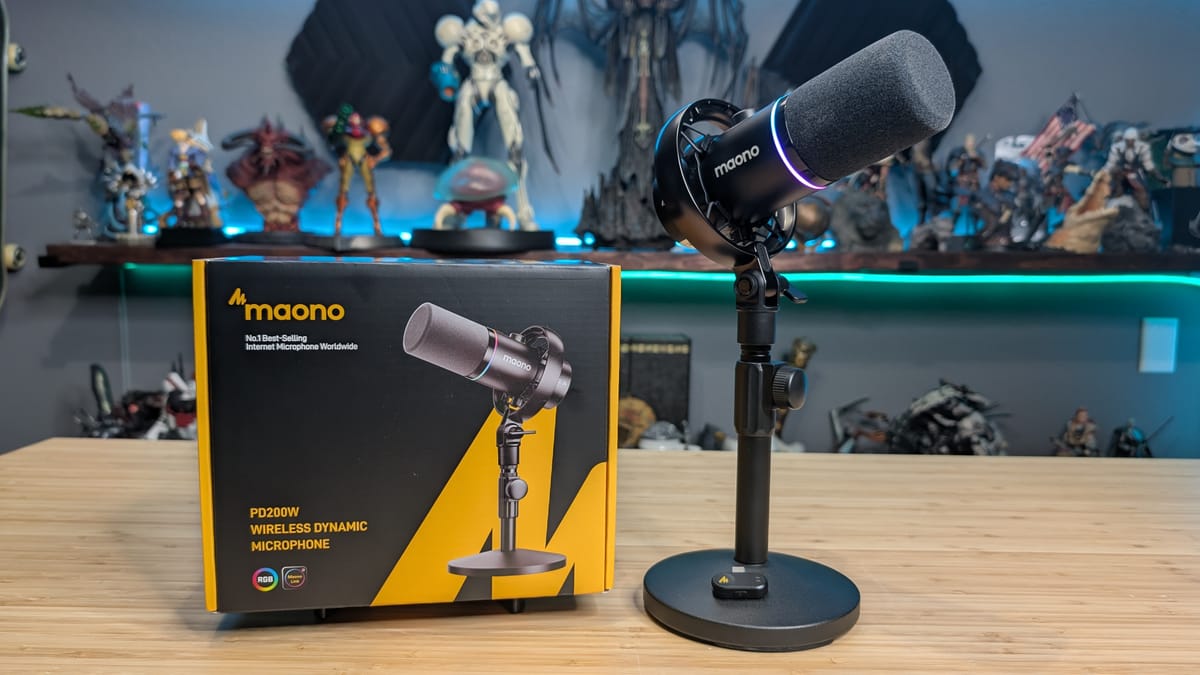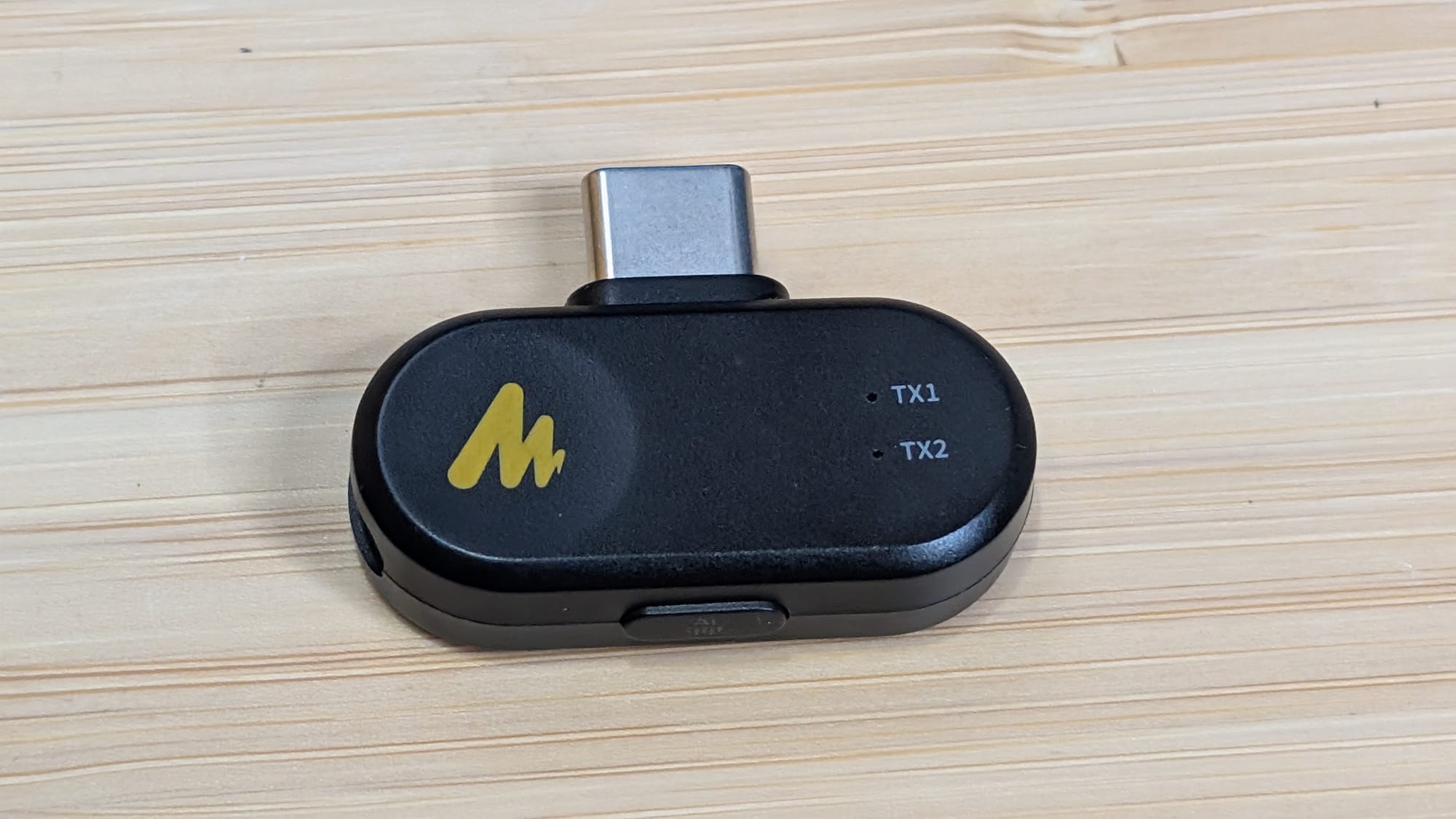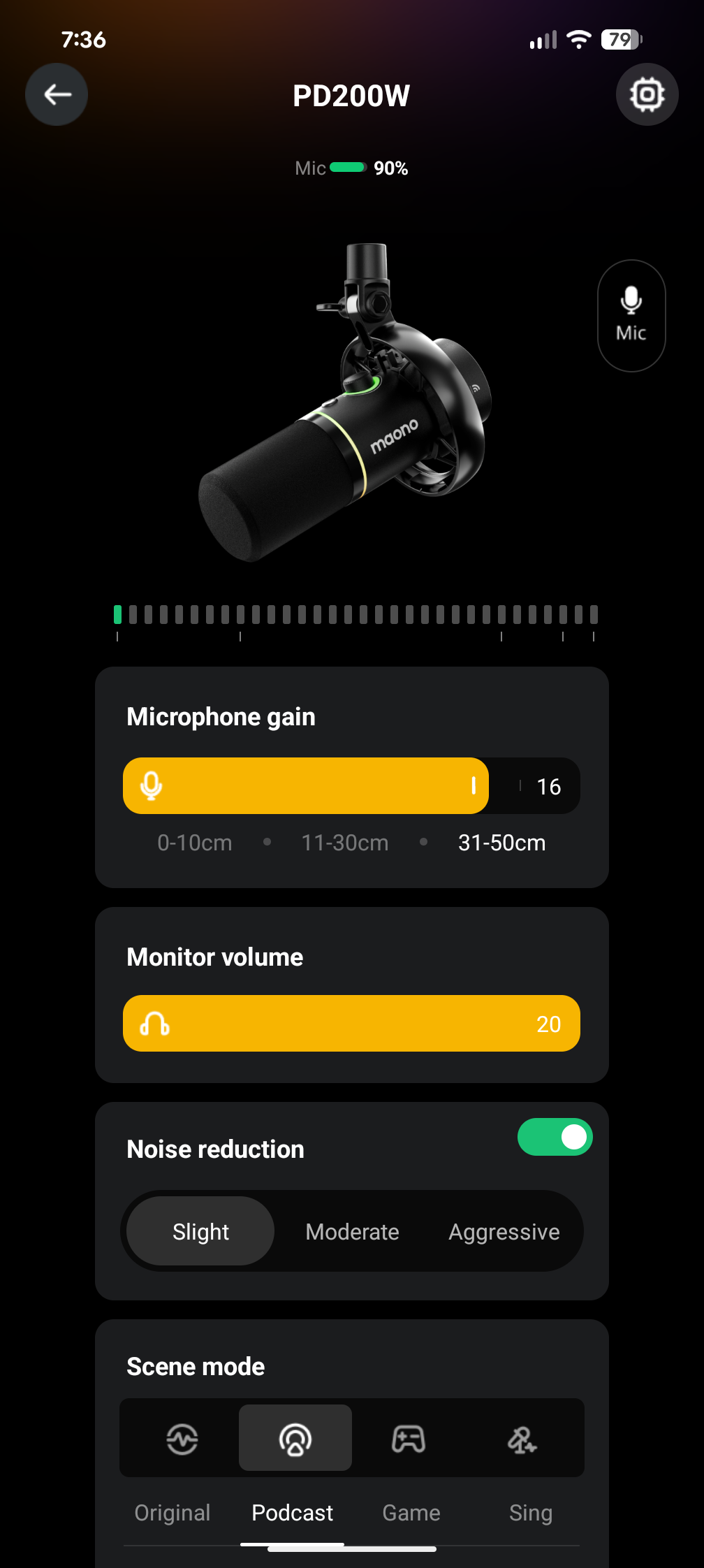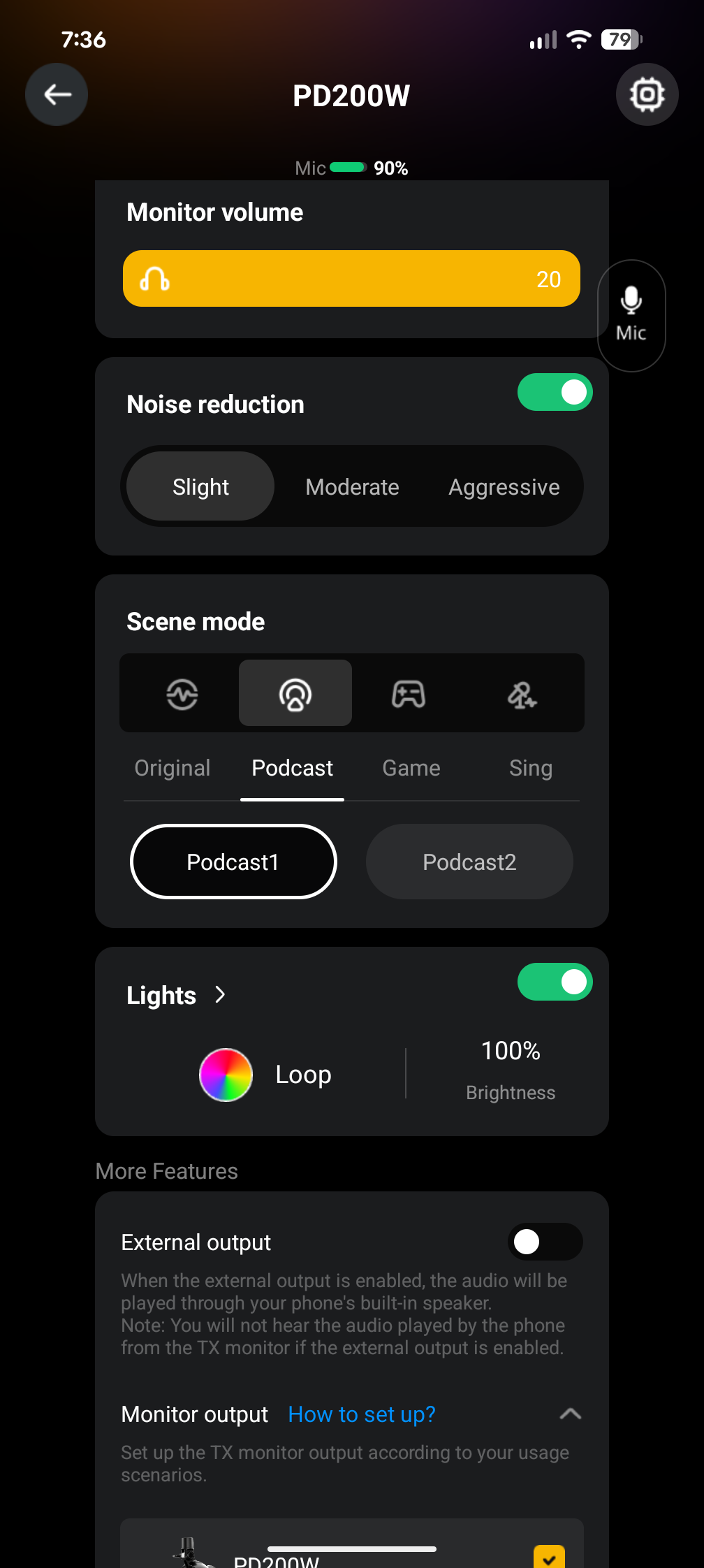
There are a lot of microphones out there that serve a specific niche, but very multi-purpose mics that do more than one thing well. The folks from Maono have a new microphone that is aimed directly at the creator space, and it has some specific features that are not only surprising, they’re also true game-changers. The Maono PD200W is billed as a hybrid microphone but we’ll need to get it out of the box and take a closer look to see what that means. I’m Ron Burke, Editor in Chief for GamingTrend.com and this is our unboxing and test of the PD200W Hybrid Microphone from Maono.
The flap as you open the box gives you a hint just how incredibly flexible this microphone system really is. They show it connecting to a phone or laptop via a cable, to either wirelessly, and fully rigged with a monitoring setup as well. Pulling out the microphone we get our first look at that flexibility with both XLR and USB-C connections on the back. It can also connect via the included USB-C dongle which operates at 2.4 Ghz, providing wireless connectivity for upwards of 60 meters, or nearly 200 feet.
As you can see, the microphone comes pre-supported in a shock mount to insulate against any unwanted bump or rattle sounds. That shock mount system can then thread into the included stand to sit on a desk or locking onto a standard stand or boom mic arm. The adjustable mic stand can stand up to 11 inches tall or as short as half that, with a heavy 5” wide base.
The microphone itself is a solid metal body, with rubber bands (extras are in the box) suspending it in the plastic shock mount ring. The stand is also metal, as is the base. Nothing about this system feels anything but premium. On the front of the microphone is a soft pop filter / wind guard that can be removed and replaced / cleaned if needed. It sits atop a metal cage that surrounds the pickup. Even this wind guard is a cut above the usual foam stuff you get with a microphone with something akin to a microfiber or felt texture to it. The cable included is a USB-A to USB-C and has a braided sheath to cover the length. The quality punches well above the price point, and the fit and finish really make this look as premium as possible.

The microphone on the PD200W is a 30mm dynamic mic with a cardioid pickup. That gives it an all-purpose pickup that is slightly directional but still able to pick up some sound from behind it. Tuning is available in the Maonolink software but we’ll get back to that. This pickup samples at 24bit / 48kHz sampling rate, with an 82kB signal to noise ratio. This means that the signal captured is 82 times stronger than the background noise, resulting in high-quality, clear, and noise-free audio. Impressively, it also has a 128dB sound pressure threshold. If you’re unfamiliar with the term, this is the highest amount of sound pressure (compressions and rarefactions - high and low pressure) that can travel through the microphone and still be turned into usable sound. 128dB is more than that of a jet engine at close range, making this an incredible microphone for just about any audio capture you could throw at it.

Beyond the sound capture, the microphone also features three-level noise cancellation. You can toggle this in the software, with settings between Strong and Slight. Strong will drop the noise floor by -28dB, Moderate handles -20dB, and Slight is -13dB. You’ll have to adjust based on your use case and environment, but the fact that there are three levels is something I’ve not encountered even with microphones at 3X the price range of this device. Even my highest end commercial microphone has only a single setting, with any further reductions being something to handle in post-production.
The flexibility of the PD200W is this device’s biggest strength. Yes, it can handle a wide variety of audio types, and with noise cancellation and audio tuning to match, but the fact that it can work with a phone, a high-end audio DAC, connect directly to a DSLR, or just about anything else in between makes it stand alone. In practice, the clarity is excellent, as you’ll be able to hear for yourself. The audio throughout this video was captured raw, without any post-processing, noise cancellation or anything else. As you can hear, it’s crystal clear. The sound has an excellent low-end, is crisp, and without any additional background noise. It was also recorded in a room with no audio treatment, making it all the more impressive. The PD200W has another flexibility – the ability to pair up. When there are two of these microphones you’ll pull two tracks separately, meaning you can adjust them independently. This is very useful when your subjects are on two sides of a room where the sound profile may be very different. That brings me to the biggest flexibility of all, and one that frankly has made this microphone a part of my go-bag. It’s entirely wireless.

Firing up the microphone with the button on the back will cause it to connect to the included USB-C adapter. With that plugged into a computer, phone, or other compatible device, the microphone springs to life. The only thing to do from there is set the audio and you’re ready to record. On the top of the device is a physical dial that you can turn to adjust the audio pickup, and clicking it lets you do the same for the monitor port – another surprise on this device. Plugging in a pair of earbuds or headphones allows you to monitor the audio pickup, ensuring you’ve got great audio quality to work with right out of the gate. With a staggering 60 hours of battery life (if you turn off the RGB anyway – yes this mic can light up your space), you’ll be able to capture a ton of audio before needing to recharge.
If I had one complaint, and it’s a minor one, it’s that I’d love to have a Bluetooth option. Dongles get lost, and the 2.4 Ghz wireless range isn’t the best for interference. It’d be awesome if we had that final piece of the puzzle – a Bluetooth option for connectivity. There may be technical limitations I’m unaware of, but in a long list of very positive things, this is the only wishlist item I could readily think of. I say wishlist as it’s not even a negative, but a nice to have.



Heading into the software, you have granular control over the microphone gain, monitor volume, noise reduction settings, what mode (Podcast, game, sing, or “original”), lighting, and where the monitor output goes – your phone’s built-in speaker or a secondary device. It’s much of the same settings you have on the physical device, but it means you can make remote adjustments without getting into the shot, if folks are on camera.
Ultimately the biggest flexibility for this device is its portability. Without the need to carry mountains of wiring, mixers, and more, but still being able to grab excellent audio without taking a ton of space in my bag, the PD200W is a great on-camera microphone. It gives off a professional on-screen look with the RGB off, as well as allowing you to cleanly capture a group of people instead of being limited by the number of lavaliers. The fact that it does all of this for just $99, and with a 12 month warranty makes it impossible to beat. There are as many audio options out there as stars in the skies, but the team at Maono truly have thought of everything.
Maono PD200W Hybrid microphone
Phenomenal
If setup and teardown in the blink of an eye, excellent flexibility, and incredibly crisp audio are your targets, the PD200W checks all of those marks easily. Better still, it does it at a price easily a third of its nearest competitor, making it an easy recommendation.
Pros
- Solid build quality across the board
- Very mobile
- 60 hours of wireless capture
- Audio capture is robust and crisp
- Connection options are numerous
Cons
- No Bluetooth option, I suppose
This review is based on a retail version provided by the manufacturer.
